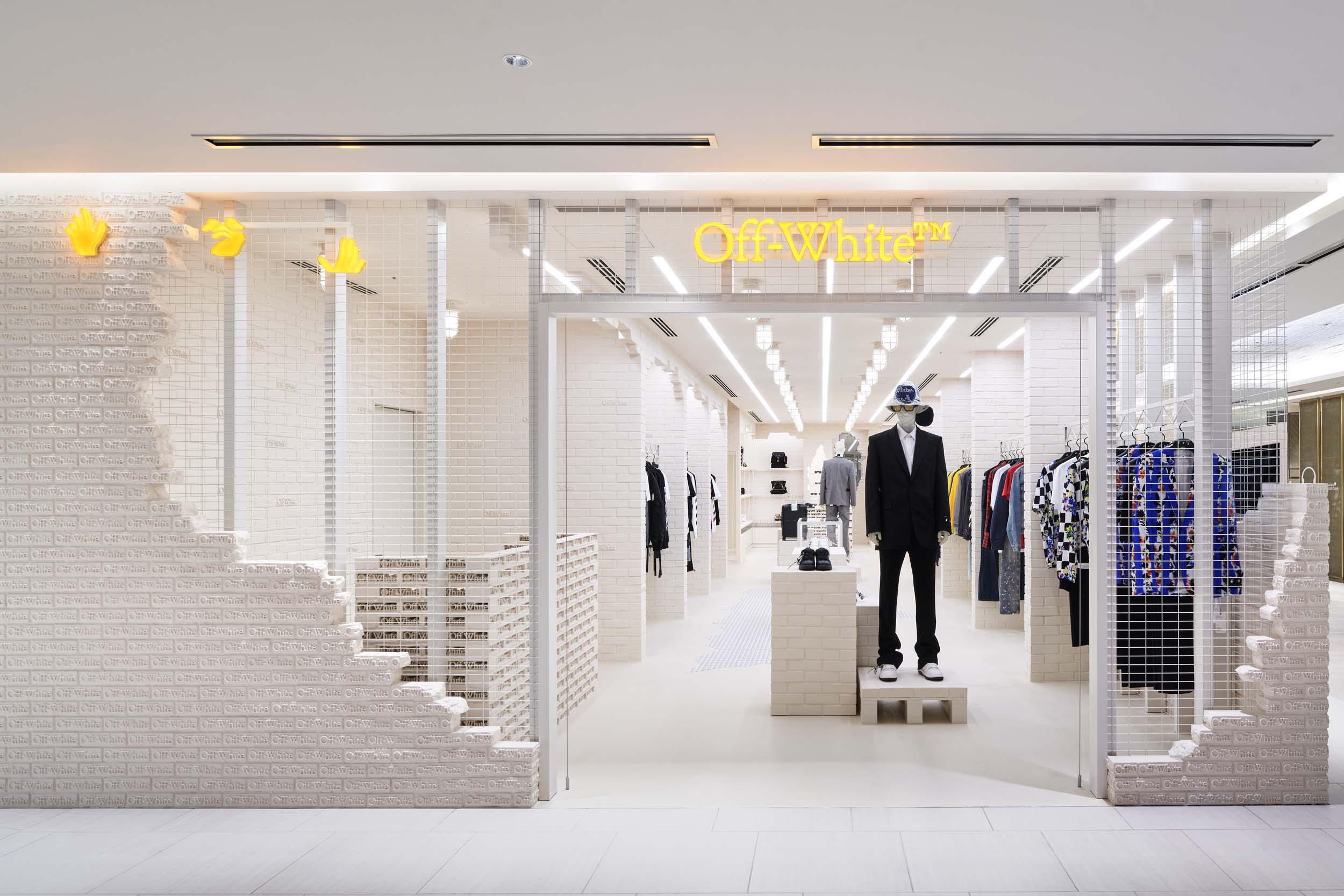Architects working in contemporary retail design realize projects through a potent mixture of architecture, art, and business. This approach attempts to create a space that relays the retailer’s vision and ethos through space and material. Though clients near and far have been affected by the “retail apocalypse,” which saw a shift in focus from in-person shopping to online, recently there’s been a veritable renaissance. Again, art, and architecture meet.
I spoke with James Wines, founder of New York–based SITE environmental arts studio, and his daughter, Suzan Wines (SITE, I-Beam Architecture & Design), about their recent collaboration with Off-White and the late Virgil Abloh, and the importance of architecture within retail design.
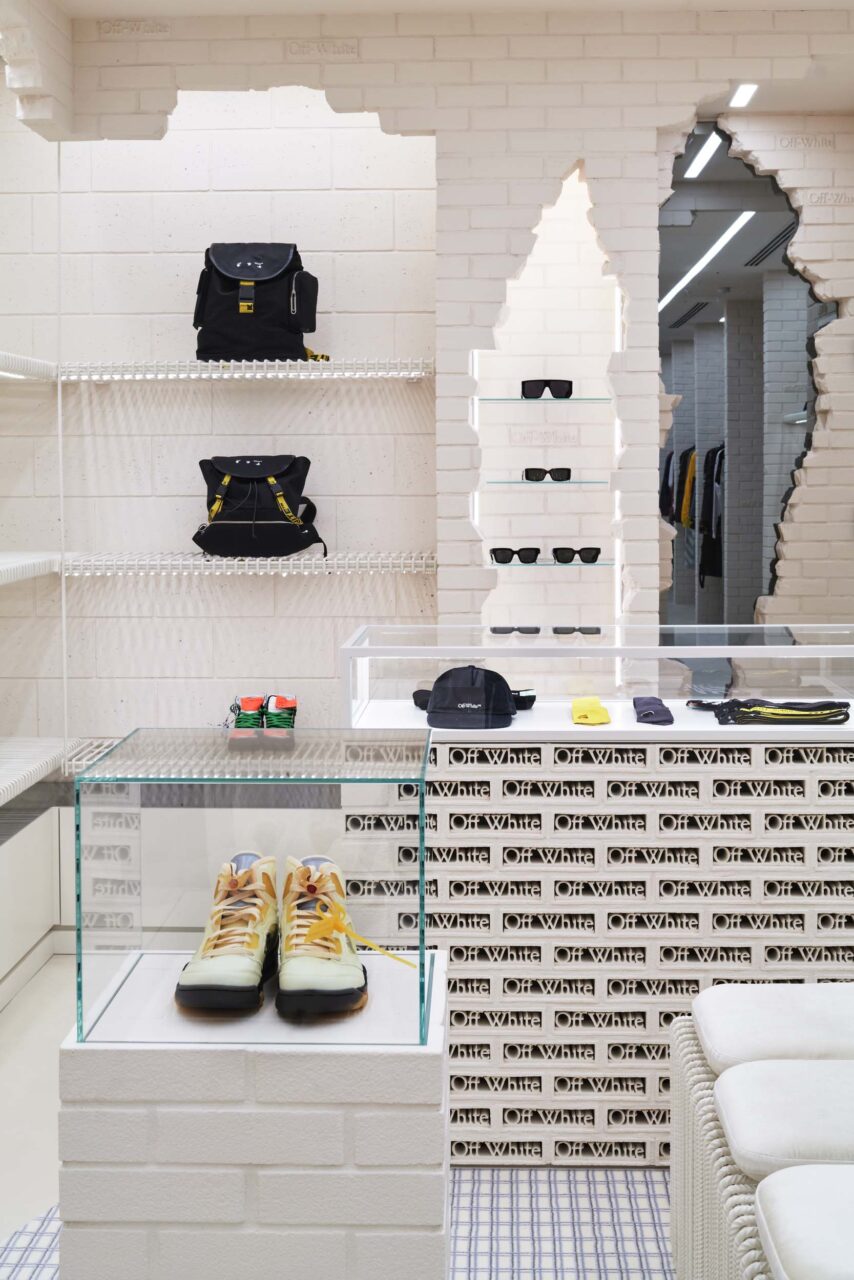

Josh Itiola: Just the idea that SITE did not one but two showrooms for Virgil Abloh is interesting to designers. How did things first start between you and Virgil?
Suzan Wines: It started with an email I missed and found late one night while catching up. Off-White? I knew that the company designed cool sneakers, but not much else. I wrote back and then Abloh set up a WhatsApp call for the first store at the end of 2019. Retail projects are quick; James did sketches, we talked about the theme, which was about the color off-white and the softness of things like fabric and walls. Construction had just started when the pandemic hit. At the time, we were working on the Willie Smith exhibit at the Cooper Hewitt, which was actually supposed to open on the day the pandemic shut everything down.
James Wines: When we had our first conversation with Virgil, it was like we were already in the middle of a sentence. We clicked right away: I like to work with the street, and he liked to work with common objects. He liked collage, too. We agreed on these and many other things. I noticed a real parallel between my previous work with Willie Smith’s then-emerging concept of streetwear and Virgil’s work, though Off-White was much more expensive! Virgil’s great virtue was that he wanted to get on with the creative idea. He was very optimistic in that sense.
With Willie, it was all about street collage: His showroom used recycled materials, junk from the street, and torn-down buildings, that sort of thing. That’s how I started with Virgil, but because he had gone corporate with Louis Vuitton, he had a more international feel. The power he had in this luxury fashion space was unbelievable.
At the opening of our Ginza store, I couldn’t believe the $700 sneakers were just being snatched up. It made me think, “Where did I go wrong in life?” It was a real ceremony. I enjoyed his energy and invention. The saddest part was that we never had the chance for real dialogue.
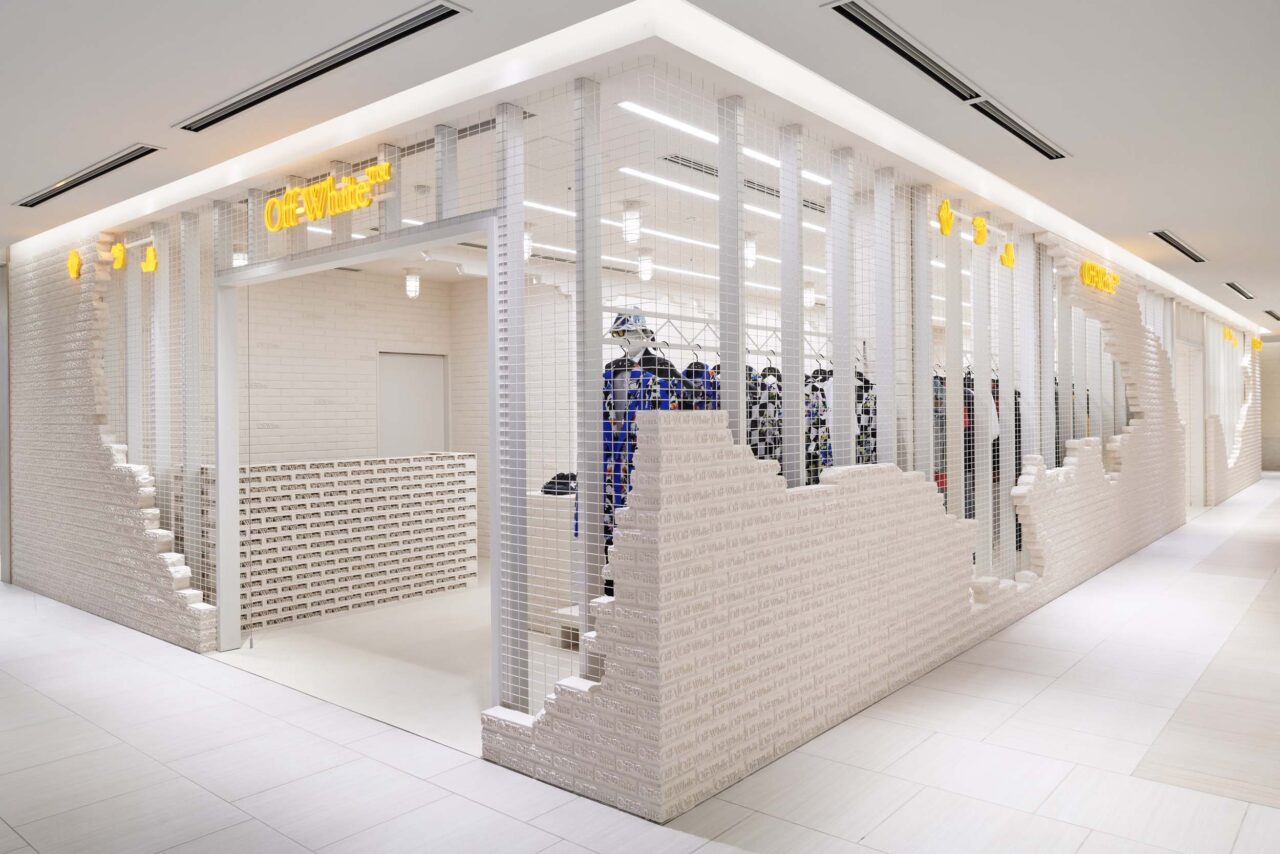
JI: What conversations or concepts sparked the design for the Ginza store? Did Off-White have a lot of input?
JW: We were guided by the question of “What is the least expensive and least intrusive industrial material we can use here?” We started with scrim wire, and the effect is that you can see through everything. The Ginza store is in this supermall, so we knew we had to do something radically different from the other nearby stores.
It ended up being a process of layering, which I thought was nice. You don’t even have to go inside; you can be tempted before even entering. You’re always seeing the merchandise. It’s not a window case, as it’s all actually on display. It’s organic, and you see the people moving around.
Japanese culture isn’t necessarily well versed in the concepts of looseness or indeterminacy that I’ve used throughout my career. We were thinking of something imprecise, yet we then had to offer our contractors and partners with the Off-White brand a precise design. They would ask, “Is that really going to be a crack in the wall?” And we had to say yes.
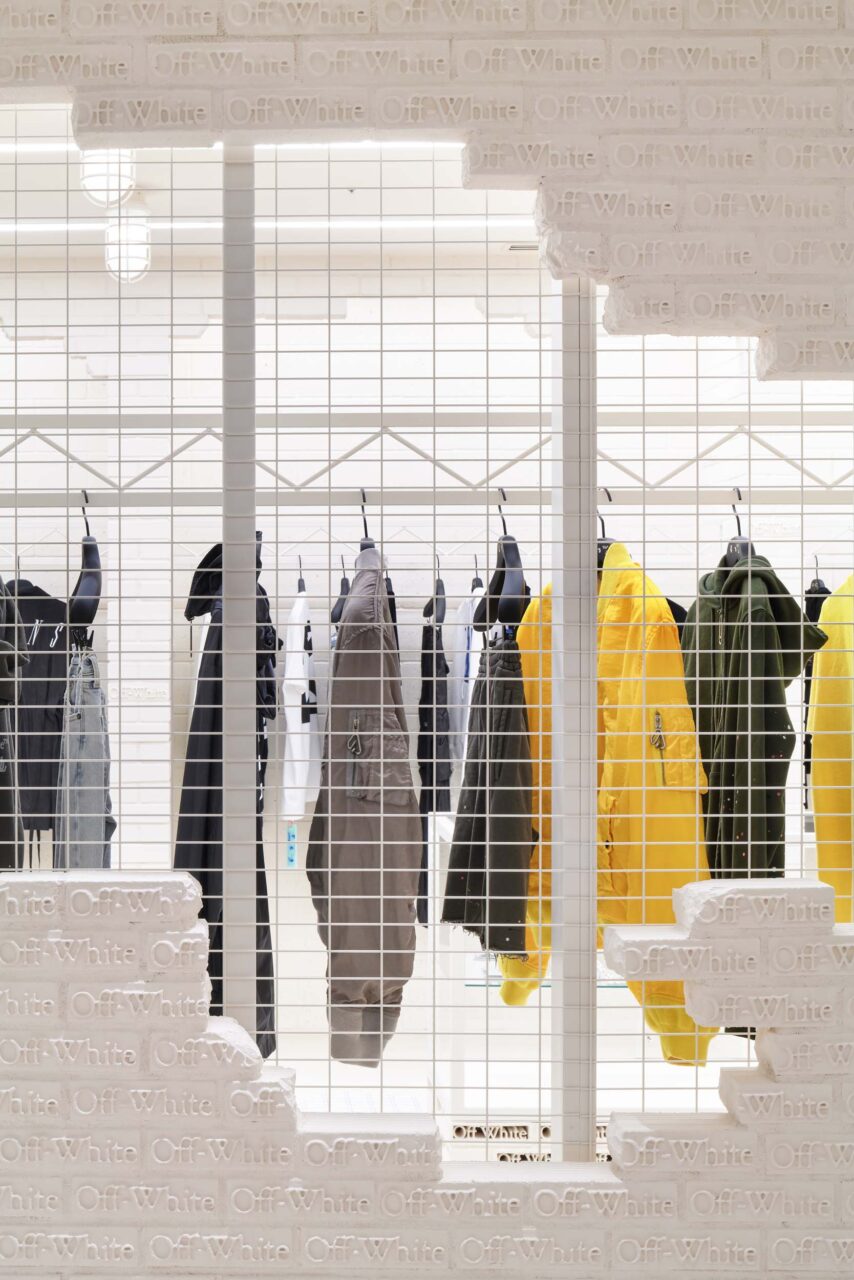
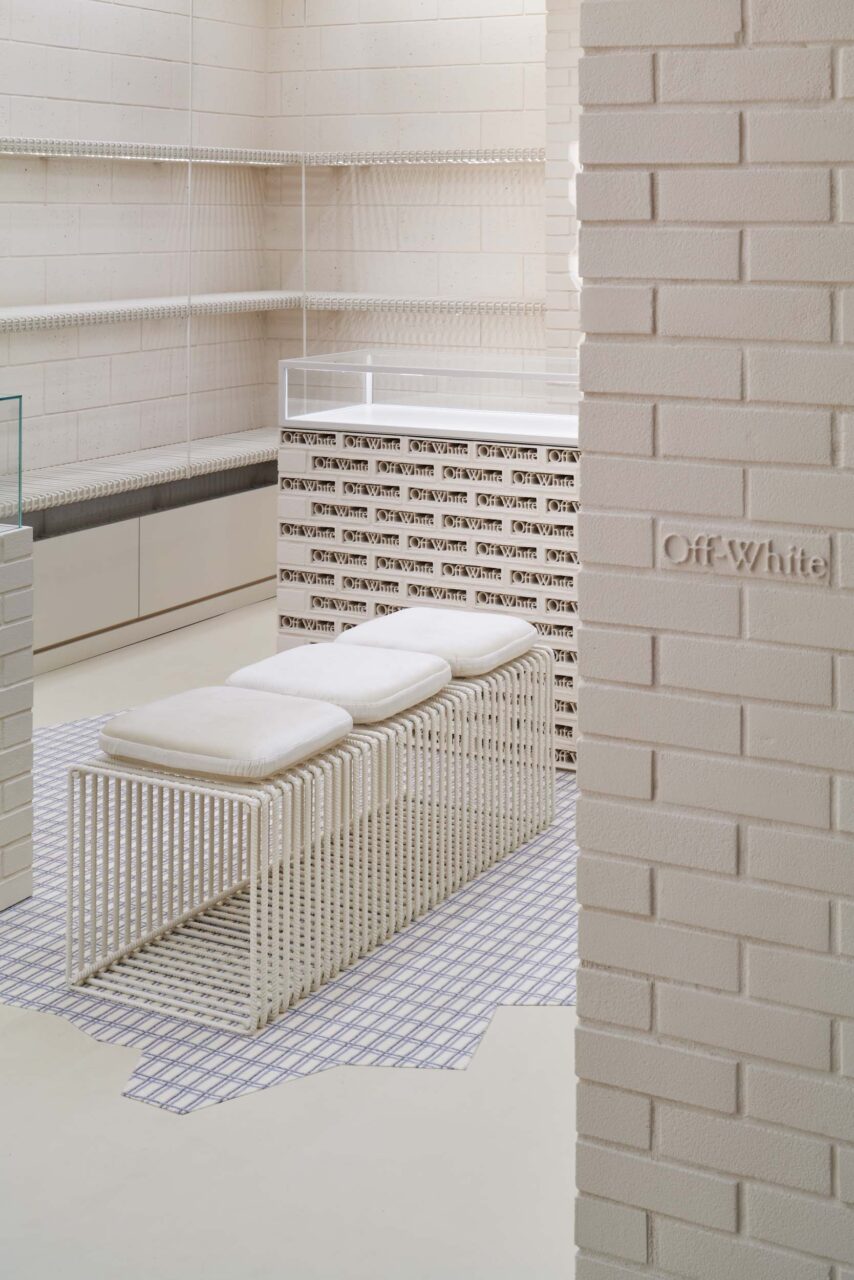
JI: Can you tell me a bit more about the details of the store?
SW: We knew from the start that we were interested in playing with the Off-White logo. The name struck us, first of all: Off-white is neither black nor white, it’s a gray something. It’s imprecise.
The setting was also important. At first, Virgil said, “I want something like a warehouse.” We asked Virgil, “So you want us to put a warehouse in a fancy shopping mall?” He replied, “I’m not going to tell you what to do; I want to see what you come up with.”
We pivoted, and that’s how we began to play with the idea of exposing the store so you see the wire mesh, rebar, and concrete. These things, which architects normally cover up, are now all exposed. Everything that is usually hidden in the shopping mall now becomes a place to display luxury clothing.
We quickly modeled the concept and worked with New Guards Group and the Japanese client on construction drawings that show the construction/deconstruction process. The pandemic posed extra challenges. We would send drawings and specs for bid, and they’d say, “That material is currently not available.” The project is about process, which is always in flux.
JW: Probably the most complex thing for them to do was to make the bricks, and especially the open ones. That was not an easy thing to do. But otherwise, it was off-the shelf stuff.
SW: All the monogrammed bricks were made in Italy.

JI: Since you weren’t on the ground there, was it difficult to get construction companies to create this vision of an incomplete store? Was it hard to translate that idea?
SW: I think the contractors had a lot of fun because their craft was being celebrated. The way the clothes hide and reveal the body was translated directly to the construction and into the store that worked to both reveal and hide itself.
JW: There were many times where it was difficult. Whenever we wanted to just knock off a brick here or there, there had to be a digital version of the change. If I was just standing there, on-site, I’d be able to do it manually, just like that. But to do it by diagram and on the computer. I was struggling with each wire, assembly, and brick.
SW: We had initially modeled every single brick, which caused my computer to crash. But soon the construction team was sending us photographs with the entire wall laid out on the floor. They followed our model and drawings line by line, brick by brick. When they asked, “How many bricks should we take away here and at what angle?” We were like, “Just take a hammer to it!” But the contractors were very precise and insisted on having every crack and chink precast as drawn.
JI: I’m thinking about Virgil’s idea of warehouse surrealism and your ideas of narrative architecture. How did those ideas play together?
SW: Virgil knew a lot about engineering and architecture. But he also knew about clothes and music; he understood all the ingredients and where the subliminal appeal of things springs from.
Virgil’s work and SITE both use humor to make ideas accessible to everyone. If you’re an average person that can’t afford the clothes in this store, it doesn’t matter—you’re still welcome. I think Virgil’s genius was in realizing that a lot of the instincts behind luxury are the same instincts that draw people to records or sneakers. He was able to make those highbrow/ lowbrow connections. This is a celebration of that, that happens to use the place itself as an opportunity for that exchange.

JI: Previously, a lot of showrooms were designed by architects. Then when the internet allowed everyone to shop online, many retailers just adopted the model of the white-box store. How important is retail design now?
JW: Virgil’s success really depended on people showing up. Because then people talk to each other, and they try things on; there’s interaction. It’s a conflict now for architects: On the one hand, everyone is ordering everything from Amazon. But on the other hand, it’s not a very exhilarating experience. You’re trying to dress yourself or ask someone’s opinion, but you get no feedback when you shop online—Virgil understood the desire for interaction between people very well.
SW: Both SITE and I-Beam have designed lots of restaurants and bars, and the task is like set design. It’s fun because you’re designing the place where someone’s going to go and pretend that they’re not living their regular life for two or three hours. The experience temporarily takes one somewhere else. It’s similar with fashion: When you’re wearing Off-White’s clothes, you can try out different personas.
